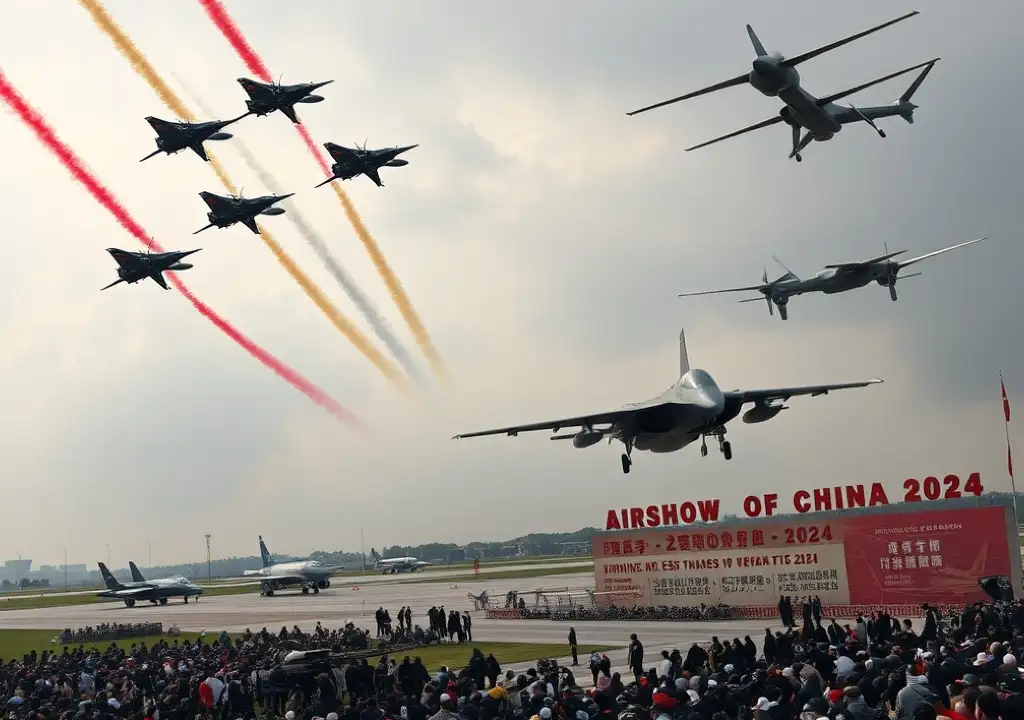The China International Aviation & Aerospace Exhibition in Zhuhai welcomed 600,000 visitors and recorded billions in transactions.
In mid-November, six Chengdu J-10 jets soared into a cloudy sky before a large crowd at Zhuhai, a southern Chinese city on the coast.
Flying in a V-formation, they turned and released plumes of red, yellow, blue, and white smoke, drawing cheers nearly as loud as the jet engines.
Moments later, the formation broke as pilots executed complex and daring aerial stunts.
The air display was just one of many demonstrations at the biennial China International Aviation & Aerospace Exhibition – also called Airshow China – named after its host city.
A wide selection of new military aircraft and gear was shown off by the People’s Liberation Army (PLA), including the updated Harbin Z-20 helicopter and the long-anticipated J-35A stealth fighter.
Also on display was Russia’s latest stealth jet, the Su-57, flying outside of Russia for the first time.
According to official Chinese sources, the event welcomed nearly 600,000 visitors and generated $38.7bn in contracts.
Beyond the business deals, the airshow had a strategic role – to highlight the growth of China’s airpower, said Peter Layton, a defence analyst from Australia’s Griffith Asia Institute.
“It’s really about presenting the scale and advanced level of PLA aviation,” he told Al Jazeera.
Yet Layton said the real indicators of progress were not the acrobatics or even the sleek J-35A, which he called “old news.”
Instead, he highlighted AI-driven aviation software and drones as the true future of aerial dominance.
AI and Drones Will Shape Future Combat Skies
Global defence experts are developing next-generation fighter planes equipped with advanced AI and machine learning, enhancing stealth and combat readiness.
Artificial intelligence is expected to transform data analysis in jets, vastly improving pilots’ situational awareness during missions.
Nations that best integrate AI with piloting capabilities will likely control future air battles.
A key concept will be “loyal wingman” drones, which assist jets in battle as sensors, shooters, and weapon carriers while cutting costs.
The war in Ukraine already shows the powerful effect drones have, from guiding strikes to tracking enemy forces.
However, no military has perfected a manned-drones partnership, and China may not achieve this until the 2030s, said Layton.
The closest concept is the J-20S, a two-seater jet shown as a scale model at the airshow, allowing one pilot to manage a drone partner.
The FH-97A drone, capable of jamming defences, scouting targets, and suppressing threats, exemplifies this “loyal wingman” idea and was shown in 2022.
Using AI, drones like the FH-97A could disable enemy defences, allowing manned jets to break through frontlines.
Layton said these drone technologies will be central in tomorrow’s air wars.
Also revealed in Zhuhai was a massive drone known as the “swarm carrier,” able to deploy smaller drones and carry weapons.
A Strategic Answer to the US
Layton explained China’s airpower development mirrors that of the United States in many ways.
“Many projects are designed in direct response to US systems,” he noted.
The Chinese J-35 resembles the American F-35, both being fifth-generation stealth jets.
While this signals strategic rivalry with the US, it also poses direct risks to Taiwan, said Shu Hsiao-Huang of Taiwan’s INDSR defence think tank.
“China is rapidly improving its air capabilities and exploring creative drone concepts, which raises regional security concerns,” Shu said.
China views Taiwan as part of its territory and vows eventual reunification, raising tensions across the strait.
While most UN countries don’t formally recognize Taiwan as independent, many – including the US, UK, and Australia – maintain strong ties with Taipei.
Since switching recognition to Beijing in 1979, the US has remained Taiwan’s key partner and top arms supplier, provoking Chinese anger.
Shu said Taiwan must pay close attention to Chinese aviation developments shown at the airshow.
“The Zhuhai event was a major wake-up call for Taiwan,” Shu said.
He added that China’s new jets, drones, and autonomous weapons could overwhelm Taiwan’s defences.
To respond, Taiwan should replace old aircraft, improve radar systems, upgrade missiles, and pursue modern asymmetric warfare tools.
“But Taiwan is moving slowly in these areas,” Shu warned. “And that is deeply concerning.”

